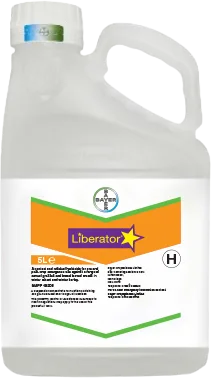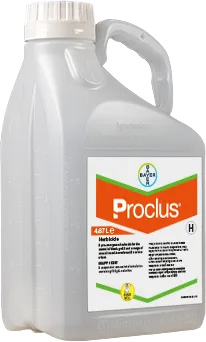Published on 1st October 2024
Local Insights
Weed control in cereals likely top priority this October

Current situation (10 September)
Harvest is down to the last bits of spring wheat, beans and the occasional other crop – I saw some flat canary grass someone is going to have to try to cut, but the bulk has been done.
Oilseed rape was still being drilled in the last week, which might turn out to be a good timing decision, although early August drilled crops have got away well and are looking good. Cabbage stem flea beetle pressure has been very low this year, especially compared with last season.
Surprisingly given all the rain earlier in the year, and the fact we’ve still been getting intermittent showers and storms, soils are pretty dry, which is hampering getting weed flushes for stale seedbeds.
Ellie’s agronomy tips for October
1. Prepare for top up herbicides in September drilled wheats
After last autumn, I’ll be surprised if there hasn’t been a lot more September-drilled cereal crops this season, hopefully with pre-emergence herbicides also applied.
But regardless of what has been sprayed at pre-em, fields with difficult grass-weeds, such as black-grass, Italian ryegrass or bromes, will likely need a top-up herbicide in October, as in warmer soils, persistency of the various active ingredients will be reduced.
A good option are the metribuzin-based products, which also include flufenacet and diflufenican. These provide some contact activity and will control a wide range of broadleaf weeds as well as giving activity against grass-weeds. In particular, it will help with groundsel, cleavers, annual meadowgrass and bur chervil, which is becoming an increasing problem.
The label for these MET products is more flexible with a GS25 latest application than previously when there was a date-based cut-off, and can be used up to a 1.0 L/ha rate. For best results against grass-weeds, I’d be targeting early post-emergence. An alternative, if you didn’t use it at pre-emergence is cinmethylin. It’s a strong active against grass-weeds, and is perhaps safer to the crop as an early post-emergence than at pre-emergence.
2. Delaying drilling into October has agronomic benefits
For those who have held off drilling wheat into October, there should be some agronomic advantages in grass-weed control and later down the line lower Septoria disease pressure. The longer you dare leave it into October, the greater those benefits, but obviously they only come to fruition if you get the crop in the ground.
Pre-emergence sprays, where you have black-grass, Italian ryegrass and bromes, will remain vital. Later drilled crops might only need or have the opportunity for one spray before Christmas, depending on speed of growth and weather, so persistency is worth looking for in your pre-emergence choice.
That could push you towards Liberator (flufenacet + diflufenican) + Proclus (aclonifen), as aclonifen and DFF both have longer persistence than cinmethylin. Aclonifen also seems to maintain its activity better in dry conditions than other actives, which might be useful if it has remained dry into October.
Cinmethylin is, of course, a strong alternative, particularly in the most difficult grass-weed situations and your choice is likely between the two approaches. If you are planning a top up programme, going Liberator + Proclus first as the pre-emergence, not least because Proclus can only be applied at that timing, does allow you to use all three strongest actives in the programme.
3. What about winter barley?
Pre-emergence choices for difficult grass-weed control in winter barley are more limited, if you are still drilling the crop in October.
Cinmethylin is not an option for winter barley, while the maximum rate of Proclus is 1.0 L/ha rather than the 1.4 L/ha you can use in wheat. But for difficult grassweeds Liberator + Proclus at pre-emergence is perhaps the best choice.
Pay particular attention to making sure seed is covered by 32mm of soil, slots are closed – roll if necessary, and try to avoid heavy rain events after application of the pre-emergence spray. I know the last point is easier said than done sometimes.
On light land, and the same applies to wheat, where the weed spectrum is annual meadowgrass and broadleaf weeds, you can choose to not apply a pre-emergence and wait until the rows are visible before applying an early post-emergence. The MET products fit well into this strategy, which would also potentially allow an insecticide to be mixed in for barley yellow dwarf virus if necessary.
But if you prefer to apply a pre-emergence, then both the MET products and Liberator are decent choices for this scenario in both winter barley and winter wheat.
4. Check over-yeared seed for germination and vigour
With lots of seed left over from last year due to be planted this autumn, just a reminder that it should be tested for germination and vigour before planting. I’ve had reports of seed with only 50% germination, which if planted would be a problem. It could also put unwarranted spotlight on pre-emergence herbicide applications.
5. Be vigilant for pests and diseases in oilseed rape
With some good-looking crops of oilseed rape already established, it’s looking like a more positive year for the crop this year – fingers crossed. But it is not a case of leaving it alone until the other side of Christmas yet. It will need monitoring for both pests and diseases. In October, Phoma and possibly early light leaf spot need to be monitored.
Phoma should be less of a threat if you’ve planted one of the many varieties with good resistance, but watch out particularly on later drilled crops where lesions have less distance to travel to get into the petioles and on lower rated varieties. You can also check for light leaf spot using the airing cupboard test for some leaves.
There has also been a couple of reports for turnip sawflies in the crop this season – which, along with all the other pests, should be monitored for.
Liberator® contains flufenacet and diflufenican. Proclus® contains aclonifen. Liberator and Proclus are registered trademarks of Bayer. All other brand names used are Trademarks of other manufacturers in which proprietary rights may exist. Use plant protection products safely. Always read the label and product information before use. Pay attention to the risk indications and follow the safety precautions on the label. For further information, including contact details, visit www.cropscience.bayer.co.uk or call 0808 1969522. © Bayer CropScience Limited 2024.





